Welcome to Gravesend Methodist Church & Community Centre
The history of our church
The Early Days
There have been Methodists in Gravesend since the early days of Methodism, indeed, as far back as 1771 a room was rented by the twenty or so members of the Society and John Wesley himself preached at the opening service to a crowded congregation.
This first enthusiasm was short-lived however and, although one or two members still met as often as possible, it was considered by the authorities at Rochester, that “Gravesend was too wicked a town for much good to be done” and an application for a regular preacher was refused. In 1807 a further application was made, this time it was approved and regular services began to be held.
These were so successful that the need was soon felt for a permanent building.
The First Wesleyan Chapel in Gravesend
Early in 1812 a meeting was held to consider the matter. From then on events moved swiftly; in spite of the uncertainties brought about by the Napoleonic War.
The new church was completed and the opening services held just six months after the decision to build had been taken.
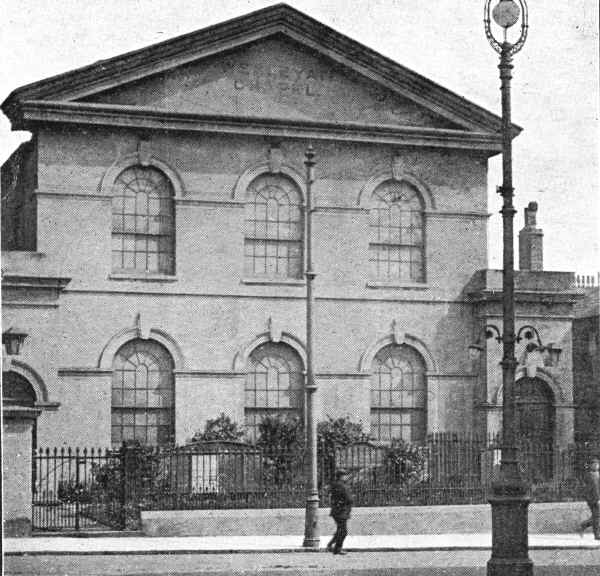
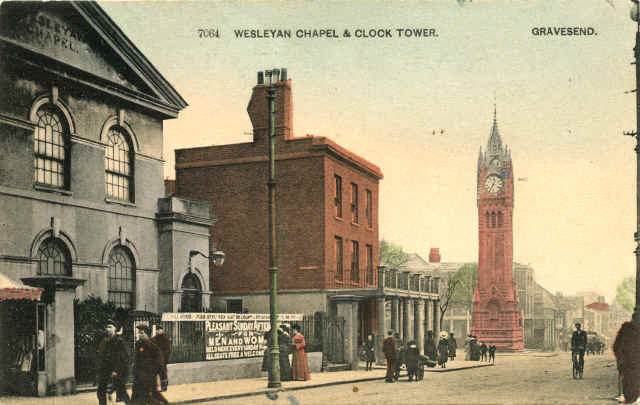
The first Wesleyan Chapel
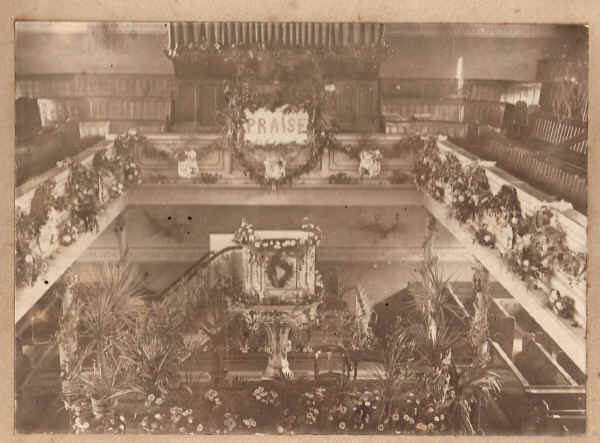
Inside the first Wesleyan Chapel
In the years that followed the church went from strength to strength. So much so, in fact, that by the end of the century the premises had become quite inadequate for its needs.
After much thought it was decided to rebuild the church and to include Sunday School Class Rooms and all other necessary accommodation on one site.
The cost of this was estimated to be £9000, but there was no hesitation, and by 1906 the Church and adjoining premises, as we know them today, had been built.
At the time of the opening some £5000 had already been collected - a wonderful effort in three years - but the debt was not finally extinguished until 1920.
In 2006 we celebrated the centenary of our present building.
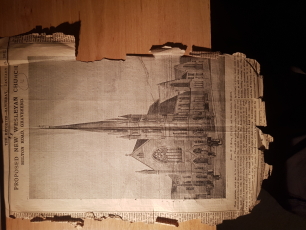
The Gravesend Reporter - January 21st 1905
Report of the proposed new church
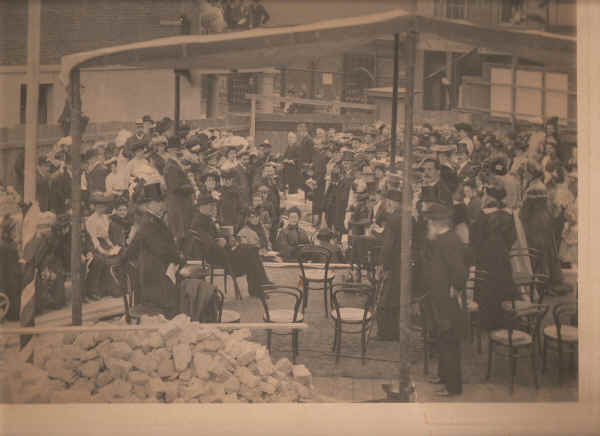
The stone laying of the new building
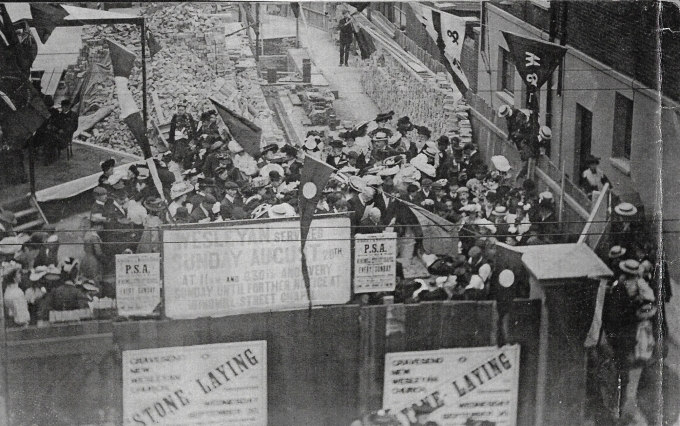
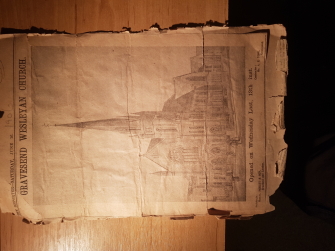
The Gravesend Reporter - 16th June 1906
Reporting on the opening of the new church
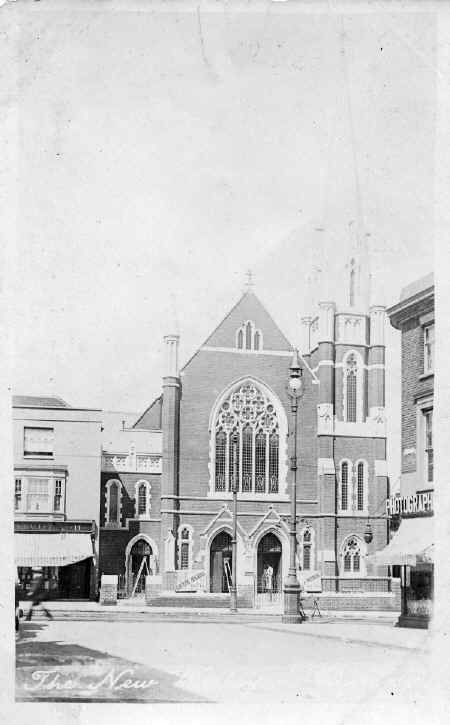
The final preparations before opening - 1906
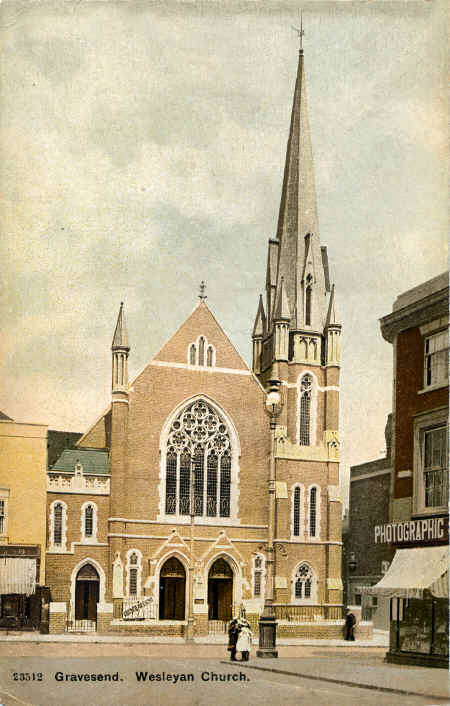
Outside all ready for opening - 1906
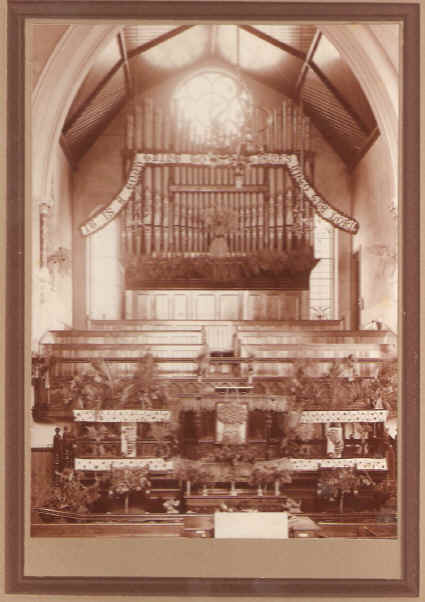
Inside all ready for opening - 1906
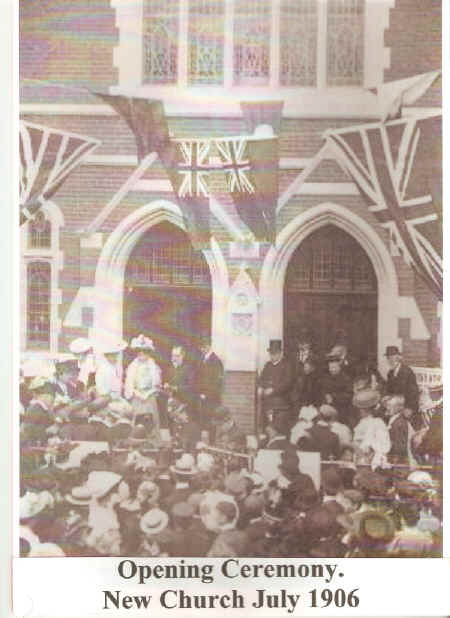
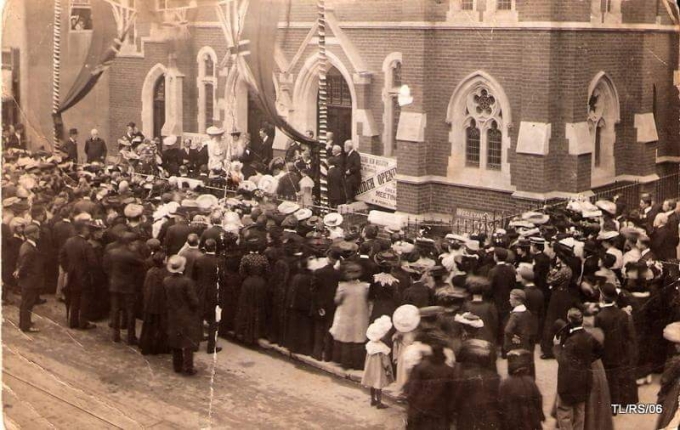
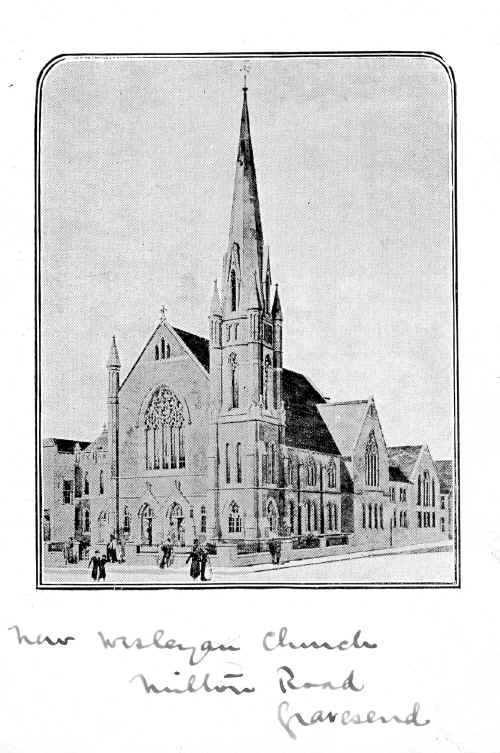
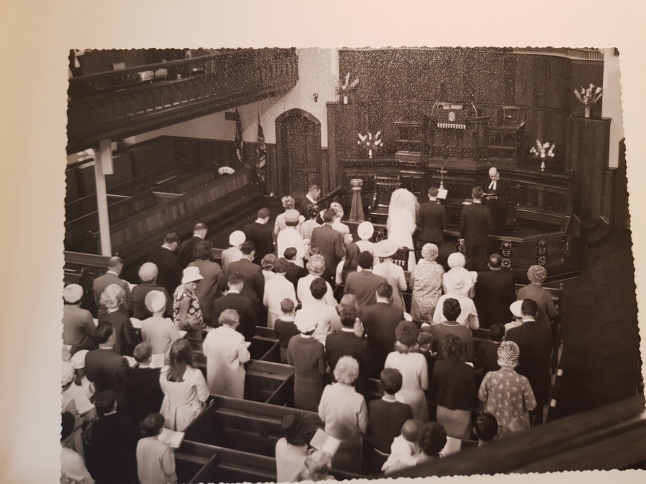
A wedding in the church in 1968
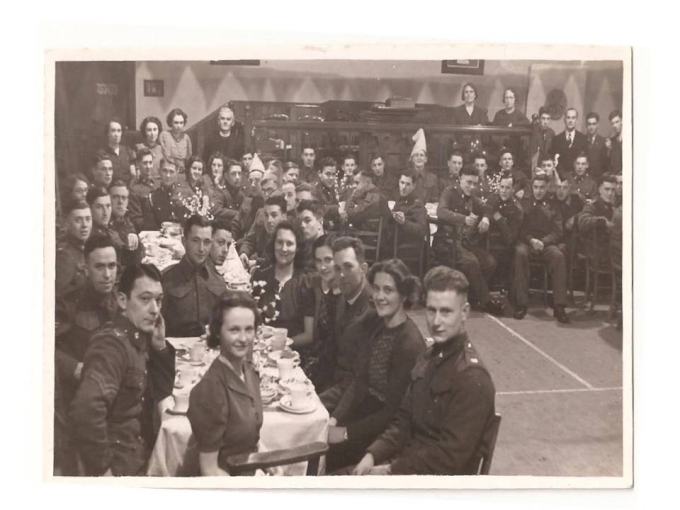
A Dinner for Servicemen in The Wesley Hall at the rear of the Church - Date Unknown, but Rev Horace Colley is seen here at back of photo on the left and he was the minister 1935-1944
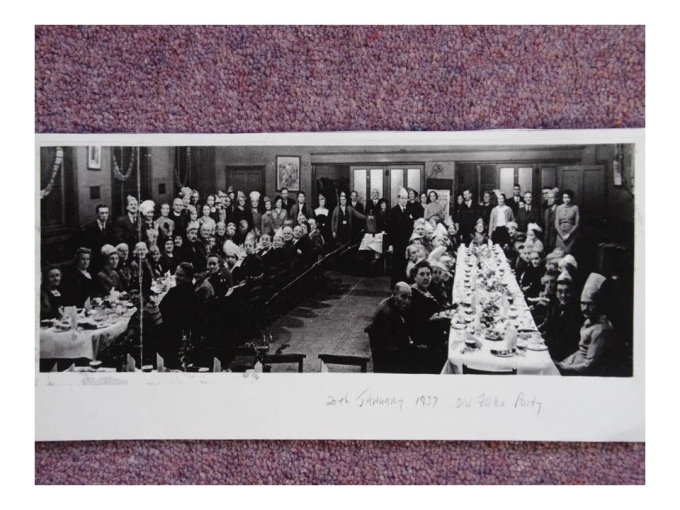
An 'Old Folks Party' in The Wesley Hall, at the rear of the Church - Dated 20th January 1937
The Rev Horace Colley can be seen on left hand side
4th from left
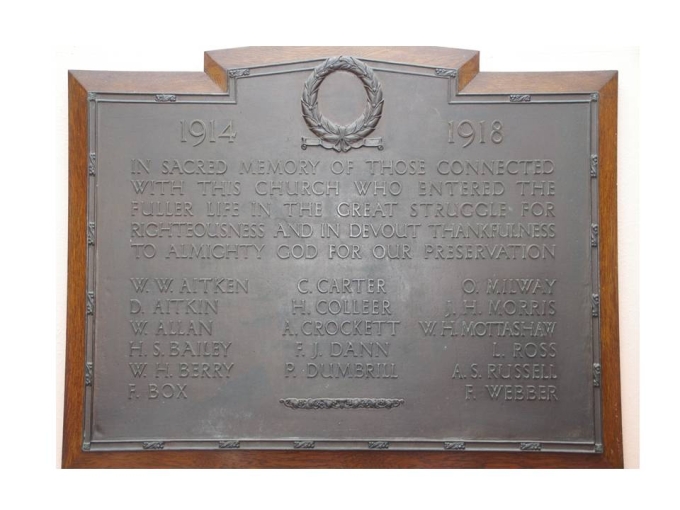
A memorial plaque is on display in the church and is in memory of those members of our church who gave their lives in 1914-1918
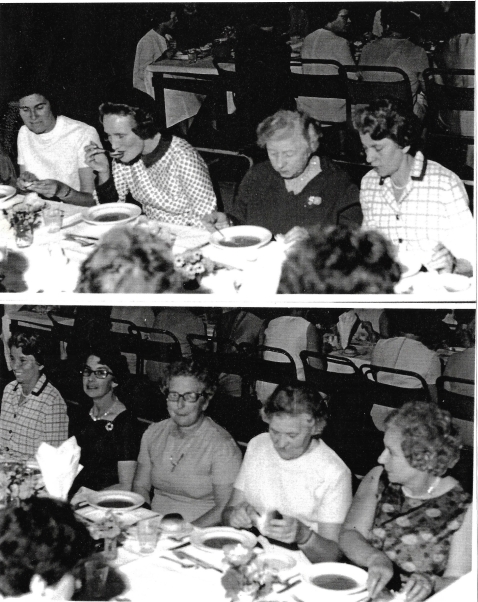
Ladies who lunch !!
Date, event and names unknown.
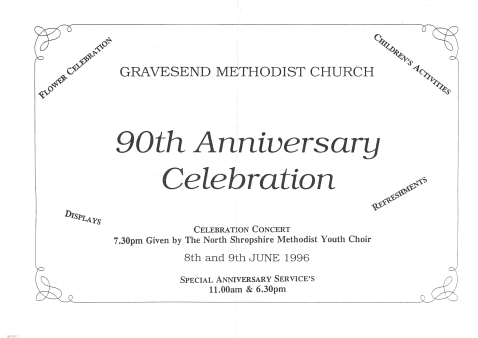
90th Anniversary Celebration
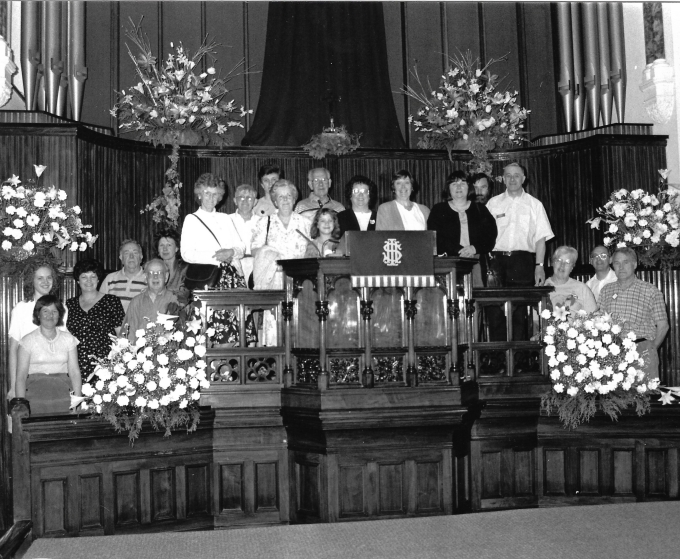
Some of our members at the 90th Anniversary Celebrations
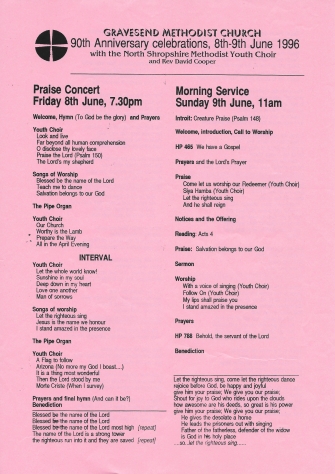
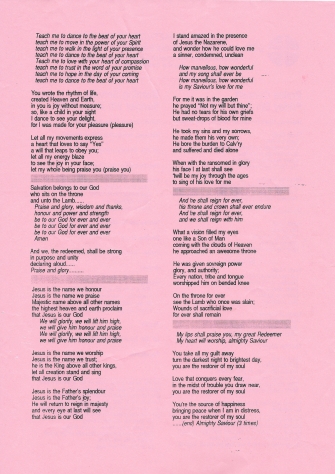
90th Anniversary Service Sheet (Maybe Saturday 8th June !)
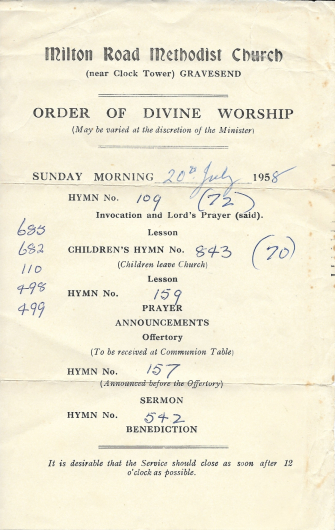
An order of service from 1958
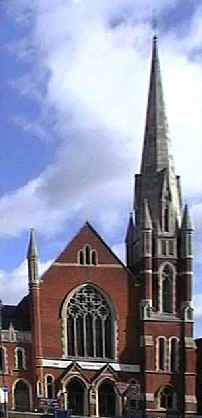
The church in 2006
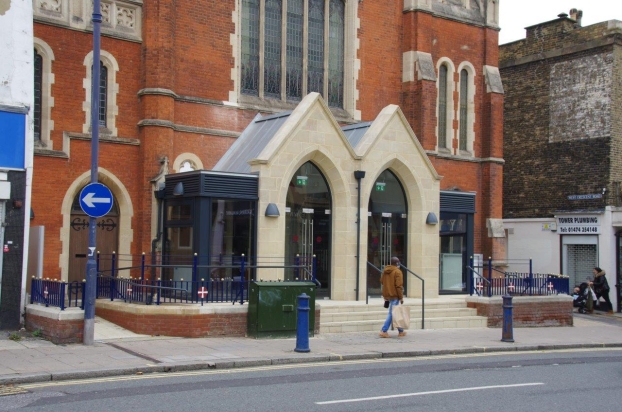
The church in 2021
History of Wesleyan Methodism in Gravesend :
Its Rise and Progress. By Mr. F.A.Mansfield
It has been thought appropriate to relate, as far as possible, the circumstances in which Methodism originated in Gravesend . Recorded facts date back as far as 1771, when there was a society of 16 or 20 members and the probability is that the first Methodist minister to visit the town was either Rev. Alex Mather or Rev. Joseph Benson, the commentator. In that year the little Society engaged a room capable of accommodating 200 people. On Monday, December 2nd 1771, John Wesley himself attended to open the room, and the interesting event is thus alluded to in his journal: ‘Monday, Dec. 2nd, I went down with several of our friends to Gravesend , when a building, designed for an assembly room, was used for a better purpose. It was quite crowded, yet abundance could not get in. After reading prayers, I preached on part of the second lesson, Hebrews 8 v.9-11. The room was pretty well filled at five in the morning. Fair blossoms! But what fruit will there be?’ The following year witnessed a second visit from John Wesley, who further says in his journal:- ‘I read prayers and preached to a crowded congregation at Gravesend . The stream here spreads wide, but it is not deep. Many are drawn, but none converted, or even awakened. Such is the general method of God’s providence! Where all approve few profit.’ Our venerable founder’s estimate of this beginning proved to be correct, for the room was held only a little more than three years, when it had to be abandoned for want of support. Among the members of Society, however, was a Mr Jessup, whose steadfastness and faith more than once saved the little flock from becoming scattered. Ever on the alert, his attention was directed to another room, which, although he was by no means in affluent circumstances, he forthwith engaged, becoming personally responsible for the rent. Preaching was then resumed and the regular means of grace observed. But this was not for long. Serious difficulties arose, which culminated in the temporary overthrow of the Methodist cause in the town, and some 35 years elapsed before it was heard of again. During this period of darkness it was commonly said; ‘The Sabbath never enters Gravesend ; it comes no further than the turnpike gate at Chalk.’ Still Mr Jessup remained true to God and eventually he came to learn that there were others of his own persuasion resident in Gravesend . These were two females from the West of England; Thomas Lockwood, a river pilot from Deptford; and Mr J Nash from Sittingbourne. They met for prayer and devised liberal things. A room in West Street was hired and application made to Rochester for a preacher. The reply was certainly not encouraging; it intimated that ‘ Gravesend was too wicked a place for much good to be done.’ In 1807 however, the town was Methodistically recognised and placed on the Rochester plan. Much good resulted from the services; but a further trial came when the little room was taken from the members. Once again the small Society was without a home. A meeting place was then found in Princes Street , this also being secured by Mr Jessup who himself paid a year’s rent in advance. Thenceforward the Society would seem to have grown steadily. In 1812 it was felt to be a great importance to the settlement and perpetuation of the work that a Chapel should be erected. But how to accomplish this was the question. The number of members was small and their financial resources limited. ‘Man’s extremity is God’s opportunity’ and so it proved in this as in many another case. Friends were raised up in Gravesend and Rochester ; a substantial sum was subscribed and the balance needed for building was borrowed by the trustees. From an old minute book we gather some most interesting particulars concerning this period. The original trustees of the ‘Methodist Chapel to be built at Gravesend’ were appointed at a meeting held in the Vestry of the Chapel at Rochester , on February 6th, 1812, the travelling preachers present being Revs. Robert Johnson, Robert Martin and William Palmer. The fifteen trustees were for the most part residents of Rochester , Chatham and Brompton, Mr John Nash, coachmaker of Chalk, being also one of the number. Tenders for building the Chapel were then opened and were as follows:- Mr Wm. Curd of Gravesend for the bricklayers, £ s. d
masons, plasterers, and slaters work 622. 8. 7
Messrs Lot & Carley, bricklayers of Gravesend 572. 0. 0
Mr Anthony Peck of Gravesend , carpenters and
joiners work, the painters, plumbers, glaziers
and smiths ironwork 1,350. 0. 0
Messrs Pemble & Whitehead, carpenters of
Chatham 1,260. 0. 0
Mr Wm. Ashenden, carpenter of Chatham 1,110. 0. 0
It was unanimously agreed to accept the tender of Mr Wm. Ashenden for carpenters work, and that of Messrs Lot & Carley for bricklayers work. It was also agreed that the front of the Chapel should be set back 22 feet from the boundary of the site. Mr Morson, attorney was directed to prepare the contracts and also to get the Trust Deeds ready for signing. Mr John Nash was authorised to give Mr Curd of Gravesend , the sum of ten guineas for surveying the bricklayers work, and that Mr Flashman be asked for his account for drawing plans, the sum being afterwards stated as £14. At a meeting of the Trustees held on May 22nd, 1812, Mr Ashenden was requested to furnish an estimate for an oak fence for the front enclosure and it was also decided that the seats in front of the gallery be let at 4s. in the second row 3s, and the rest at 2s.6d. per quarter, and that those in the body of the Chapel be let at 2s.6d. and 2s. per quarter; and that the chandeliers of Rochester Old Chapel be purchased for use in the Gravesend Chapel. In April 1835 the Trustees agreed to the introduction of gas-light to supersede candles. Many interesting extracts might be made from these early minutes if space would permit.
The appended obituary notice, however, shows the names of some of those on whom the burden of establishing our beloved Church in Gravesend chiefly rested:- Mr Robert Starbuck, died 1st February, 1831; Mr John Nash, Senior, died 23rd February 1833; Mr John Starbuck, died 27th August, 1834; Mr. Wm. Bouniwell, died August 1835; Mr George Osborn, Senior, died 5th May 1835; Mr John Bumstead, died 22nd January, 1837; Mr Robert Jessup, died 24th April, 1838; Mr. James Hulett LL.D. died 24th April, 1838.
A present member of the Church, Mrs. Ford (to whom we are indebted for much information) dates her membership back to 1845, and she well recollects a former member rejoicing in the fact of his rowing John Wesley from Gravesend to Tilbury.
Mention might also be made of Dr. Armstrong, Mr John Emery, Mr J.R.May, Dr. Hawkins, Messrs. Hadler, Taylor , Knee, Emery, Moore , Shorter, C.Hooper Smith, Hammond , Broom, W.Carpenter, James Dean, John Rose and others, who helped to carry on the work so well begun, and who have gone to their reward.
The Chapel has several times been altered and improved. The pulpit formerly stood against the wall at the northern end of the Chapel, but it was brought forward to allow for the erection of the gallery for the organ. The instrument previously in use was located in the southern gallery. Referring to the organ it is fitting to remember Miss Broom, Mrs Nicholson and Mr. C.Hooper Smith, who in turn for many years led the psalmody of the services.
The Gravesend Circuit was formed in 1819, the first superintendent appointed being the Rev. Thomas Rowland. At one time a large slice of Essex was included in this Circuit, but that arrangement ceased in 1895, when the Rev. G.H. Pickering then on the Gravesend plan, became superintendent of Grays.
The record would be incomplete were it not stated that when the Chapel was first opened the Sunday School was conducted in a room in Manor Road , the superintendent being Mr. Richardson, a grocer of High Street. The School was subsequently removed to Peacock Street .
It may well be expected that the knowledge of past achievements, so manifestly guided and controlled by the hand of God, will stimulate the Church of the present day to increased activity in order that our glorious heritage may be passed on for the spiritual good of those who are yet to follow in the train of our forefathers.
WESLEYAN/METHODIST PRIESTS OR PREACHERS
OF MILTON NEXT GRAVESEND AND GRAVESEND , KENT
1771 Rev. Alexander Mather and Rev. Joseph Benson
1771/72/73 Rev. John Wesley – Founder of Methodism. Opening of the Ebenezer Chapel, Milton Road , Gravesend .
This after the town was Methodistically recognised (1807)
Chapel 1812
Travelling Preachers Revs. Robert Johnson, Robert Martin and William Palmer
1819 Gravesend Circuit formed, with a large part of Essex included.
First Superintendent was to be Rev. Thomas Rowland.
Unable to find records until 1837/1838
Found list of services:- Sunday 7 a.m. 10.30 a.m. 2 p.m. 5 p.m. & 6 p.m.
Sunday School, Manor Road , Milton next, Gravesend
Tuesday Lectures 7 p.m.
Prayer Meeting Friday 7 p.m.
1841 Chapel enlarged to hold 700 persons.
1842-1845 Rev. George Scott.
Sunday School, Manor Road .
Mr John Richardson – Treasurer 1845-1847 Rev. Robert Maxwell ( 7 Milton Road )
1846 School erected Peacock Street , with wings to School to house
Priest and School Master.
1847-1851 Rev. John Hobkirk
1851-1854 Rev. M.Jubb No.2 Peacock Street “ Milton British Day School ” 1854-1857 Rev. J.Hearnshaw
1857-1860 Rev. T.A.Rayner
1860-1863 Rev. Richard Ray
1863-1866 Rev. Thomas Thompson
1867-1868 Rev. Stephen P.Harvard
1868-1870 Rev. George Turner Not to live in Church House
Resident 38 Windmill Street , Milton next Gravesend
1870-1873 Rev. Joseph Little Home 38 Windmill Street
1873-1876 Rev. Samuel Wesley “ “ 1876-1879 Rev. George Butcher “ “ 1879-1882 Rev. G.S.Hutton “ “ 1882-1885 Rev. Thomas Wenn “ “ 1883 “ 42 Windmill Street 1884 1885-1888 Rev. W.H.Milward “ “ 1888-1891 Rev. S.R.Williams “ “ 1891-1894 Rev. John Jefferys “ “ 1894-1897 Rev. S.J.Silcox “ 14 The Grove 1897-1900 Rev. John Pratt Elton “ “ (1895 Essex ceased to be on Gravesend Circuit)
Wesleyan/Methodist Ministers, Milton Road
1900-1904 Rev. E.R.Eslick Home 14 The Grove
1904 Contemplating Building New Church with School
1904-1907 Rev. W.H.Jackson Picken Home 14 The Grove
1905 Made Chaplain of local Barracks
1907-1910 Rev. George Neal Willis - Home 14 The Grove
1910-1913 Rev. J. Edward Harlow - Home “Madeley”, 9 The Avenue
1913-1916 Rev. George Lunn
1916-1920 Rev. G.Lang
1920-1926/27 Rev. William Looken
1926-1929 Rev. Thomas Hamilton Groves
1929-1931 Rev. G.H.McCormick M.A. B.D.
1931 Named Methodist Chapel/Church
1931-1935 Rev. A.G.Lloyd
1935-1944 Rev. Horace Colley
1944-1950 Rev. George Gregory Image
1950-1956 Rev. Dennis Robson
1956-1963 Rev. John Leonard Waddy
1963-1969 Rev. Albert Parkin Image
1969-1974 Rev. Leslie Lazenby Image
1974-1977 Rev. Roy Freeman Image
1977-1989 Rev. Roger Cresswell Image
1989-1997 Rev. Brian Snellgrove
1997-2010 Rev. K.Andrew Lindley Image
2010-2012 Vacant - No Minister
2011 Manse at 9, The Avenue, sold
2012-2012 Rev. Alan Thorpe Image
2013-2014 Vacant - No Minister
2014-2015 Rev. Noreen Daley-Lee Image
2015-2022 Rev. Tony Graff Image
2022- Rev. Alexandra Terrett Image





